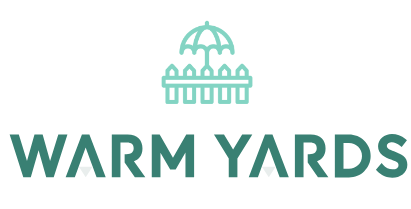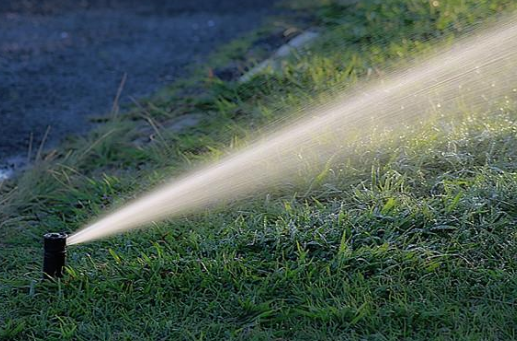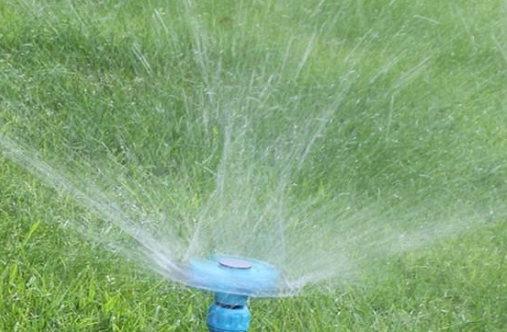Six Major Irrigation Techniques for Gardens: Which One Do You Prefer?
Irrigation is an essential part of garden maintenance, and there are several commonly used irrigation methods. These include sprinkler irrigation, flood irrigation, pipe irrigation, drip irrigation, and micro-sprinkler irrigation. Some areas also use methods like seepage irrigation and mist irrigation. Today, we will introduce six major irrigation techniques for gardens.
1. Sprinkler Irrigation
Sprinkler irrigation is a method where water, under pressure, is sprayed above the planting area to form fine droplets that scatter over the soil.
A sprinkler system typically consists of a pressure water source, a water delivery pipe, and a sprinkler head. It’s an advanced method and, depending on the sprinkler head design, can include buried retractable sprinklers, insert-rod oscillating sprinklers, or plastic micro-sprinklers.
Advantages:
-
Large spraying range: Sprinklers typically cover an area of over 7 meters, making this method ideal for large lawns.
Disadvantages:
-
Installation, construction, and maintenance are relatively complex.
2. Flood Irrigation
Flood irrigation is a method where water flows over the planting area and uses gravity and capillary action to moisten the soil. It can create a water layer on the field, allowing water to seep into the soil.
Advantages:
-
Simple to operate, but with low water use efficiency.
Disadvantages:
-
Wasteful of water resources, and can severely damage the soil structure.
3. Pipe Irrigation
Pipe irrigation involves manually dragging soft water pipes to deliver irrigation water directly to the planting area.
Advantages:
-
Easy to operate, and more efficient than flood irrigation.
Disadvantages:
-
Requires highly skilled labor, and the workers’ experience plays a large role. The workload is also significant.
-
Water distribution can be uneven, leading to water wastage. Often, there is too much water, which can negatively impact the soil and crops, causing soil structure damage.
This method is still widely used in villa areas and residential neighborhoods because professional garden irrigation equipment has historically been unavailable.
4. Drip Irrigation
Drip irrigation involves delivering water under pressure through pipes and emitters that release water drop by drop near the plant’s root zone.
Advantages:
-
Improves quality and increases yield and efficiency.
-
Maintains soil structure.
-
Controls temperature and humidity.
-
Saves water, labor, and fertilizer, providing uniform irrigation and helping to maintain soil granulation and plant absorption.
Disadvantages:
-
Installation can be complex, and emitters can become clogged and hard to maintain.
-
Prone to clogging.
-
Could lead to salt accumulation.
-
May restrict root development.
5. Micro-Sprinkler Irrigation
Micro-sprinkler irrigation refers to systems where the individual sprinkler heads cover an area of less than 4 meters. These systems are small and have low flow rates, providing uniform irrigation.
Advantages:
-
Low working pressure and small flow rates.
-
Can increase soil moisture on a scheduled basis and improve air humidity, regulating the local microclimate.
Disadvantages:
-
Installation is complex, and the sprinkler heads and pipes are often exposed above the soil, making the system less aesthetically pleasing and harder to manage and maintain.
6. Seepage Irrigation
Seepage irrigation uses underground permeable pipes buried in the soil to slowly release water into the root zone of the plants.
Advantages:
-
Soil remains loose after irrigation, preserving its structure and preventing surface compaction, creating optimal conditions for crop water absorption.
-
Low surface moisture, reducing evaporation.
-
Underground pipes save space, allowing for easier movement and field operations. Irrigation and farming activities can occur simultaneously.
-
High irrigation efficiency with minimal water use.
-
Reduces weed growth and plant diseases and pests.
-
The system uses low flow and pressure, saving energy.
Disadvantages:
-
Poor surface moisture can hinder seed germination and seedling growth, especially for shallow-rooted crops.
-
High investment costs, complex installation, and challenging maintenance. Once the pipes are blocked or damaged, it’s hard to detect and repair the issue.
-
May result in deep seepage, especially in highly permeable light soils, leading to water loss.
However, underground seepage irrigation has specific requirements, such as preventing root entanglement and soil clogging. The pipes need to have high permeability and anti-clogging features, and the water quality must meet stringent standards. The installation process is also very difficult. This method is still in experimental research stages.
These are the six major irrigation techniques commonly used in gardens. Which one do you prefer? Each method has its pros and cons, and the best choice depends on your garden’s needs, size, and specific conditions.




